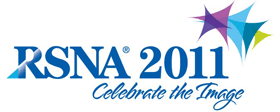
Abstract Archives of the RSNA, 2011
SSA16-05
CT Perfusion Imaging of Acute Basilar Artery Occlusion
Scientific Formal (Paper) Presentations
Presented on November 27, 2011
Presented as part of SSA16: Neuroradiology (Acute Stroke)
Jeffrey Scott Carpenter MD, Presenter: Consultant, Penumbra, Inc
Consultant, Covidien AG
Consultant, F. Hoffmann-La Roche Ltd
Joseph Donahue MD, Abstract Co-Author: Nothing to Disclose
To describe the clinical utility and limitations of CT perfusion (CTP) imaging in the diagnosis of acute basilar artery occlusion (BAO).
Over a four year period, 1,843 CT perfusion studies were performed in patients clinically suspected of having an acute stroke within the previous eight hours. Nineteen patients had documented BAO by CT angiography (CTA). Perfusion data included two to eight levels covering 2.0 to 6.4 cm of clinically relevant brain. The data was retrospectively processed using Vitrea Perfusion 4.0 software and regions of interest placed over the pons, cerebellum, midbrain, thalami, medial temporal and occipital lobes.. Standard parametric indices of cerebral blood volume (cbv), cerebral blood flow (cbf), meat transit time (mtt), time to peak (ttp) and delay of bolus arrival (delay) were evaluated by two neuroradiologists and judged as either normal or abnormal for each of the imaged levels. Any perfusion parameter judged as abnormal constituted a "pick up" of a BAO.
Six of the 19 basilar artery occlusions were not detected by CT perfusion using all levels. If CTP interpretation was constrained to the thalamic and occipital lobe levels as is often routine, 10 of the 19 basilar occlusions would have been missed. CBV and CBF maps were not definitively abnormal in any of the cases with quantitative values above threshold values proposed for the anterior circulation. The most sensitive indicators of a perfusion abnormality in the posterior circulation were ttp and delay values. Basilar artery occlusion in patients without discernable posterior communicating arteries resulted in perfusion abnormalities detected by CT perfusion in all cases (5 of 5).
CT perfusion imaging alone is not currently adequate for the detection or depiction of basilar artery occlusions. Time to peak and bolus delay parameters are the best suited for detecting perfusion derangements caused by an acute basilar artery occlusion. CBV and CBF estimations were of extremely limited utility in detecting perfusion abnormalites in the setting of acute basilar artery occlusion.
CT perfusion imaging is commonly used in acute stroke. The characteristics of this modality are well documented in the anterior circulation but few studies have addressed basilar artery occlusion.
Carpenter, J,
Donahue, J,
CT Perfusion Imaging of Acute Basilar Artery Occlusion. Radiological Society of North America 2011 Scientific Assembly and Annual Meeting, November 26 - December 2, 2011 ,Chicago IL.
http://archive.rsna.org/2011/11013266.html

